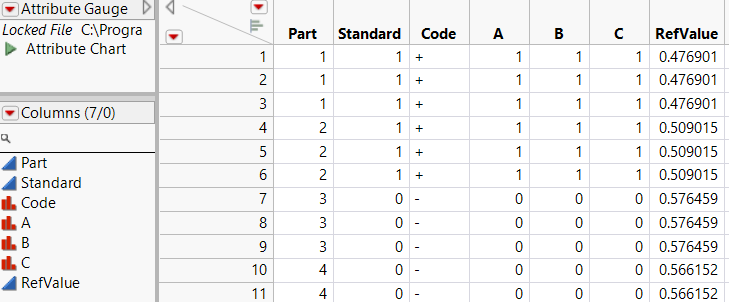Overview of Attribute Gauge Charts
Before you create an attribute gauge chart, your data should be formatted using the following guidelines:
• In order to compare agreement among raters, each rater in the data table must be in a separate column. These columns are then assigned to the Y, Response role in the launch window. In Figure 7.2, each rater (A, B, and C) is in a separate column.
• Responses in the different columns can be character (pass or fail) or numeric (0 or 1). In Figure 7.2, rater responses are numeric (0 for pass, 1 for fail). All response columns must have the same data type.
• Any other variables of interest that you might want to use as X, Grouping variables should appear stacked in one column each. (See the Part column in Figure 7.2.) You can also define a Standard column, which produces reports that compare raters with the standard. The Standard column and response columns must have the same data type.
Figure 7.2 Attribute Gauge Data
